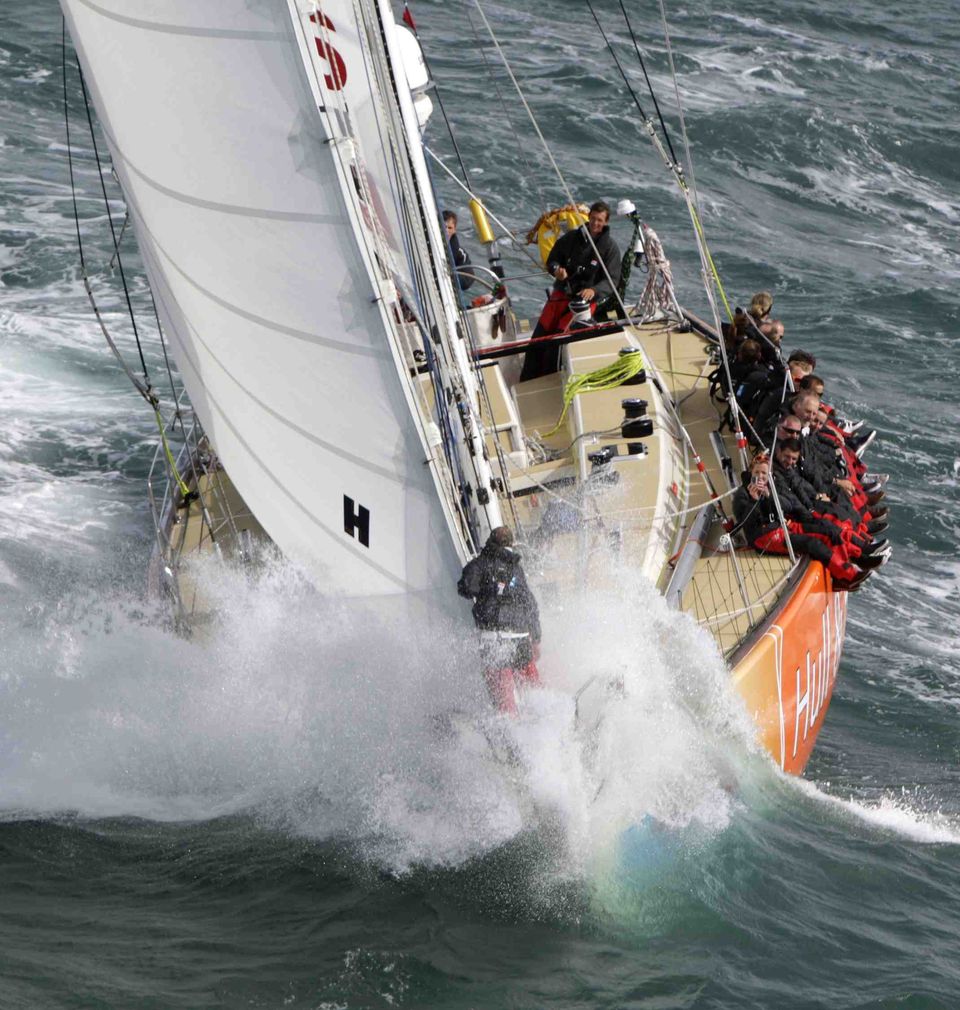The Clipper Round the World Yacht Race
The Clipper Round the World Yacht Race
This is an epic account of arguably one of the toughest races on earth. The event was conceived by a yachting legend; Sir Robin Knox-Johnston, and gives amateur sailors the chance to compete in a round the world classic…
Who are you
Della Parsons
The Challenge
Clipper Round the World Yacht Race
How long did it take
I did the Clipper 09-10 Race which was 10 months in total.
What was the distance
35,000 nautical miles
How much did it cost
£32,000 for the Full race which included all necessary training & basic kit. One single leg was approximately £7k
Who was the organiser

What was it like
The race is between the 10 boats in the Clipper fleet. Points and podium positions are awarded for each individual race, with the overall race winner being the yacht with the most overall points. On my race the yachts were 68ft and were each crewed by 18 people. One professional skipper and the rest complete amateurs with varying degrees of sailing experience. Around 40% like me, were complete sailing novices at the point of signing up. During training you quickly become part of the Clipper family, making strong bonds with people you train with, all embarking on the same adventure. Once you get allocated a boat and a team, the build up to race start really begins as your Skipper allocates roles and responsibilities and you start to work on your campaign. It IS a race after all!
During your training weeks you are really learning about how to sail and race the boats, how to work as a team through all the evolutions and of course constant practise of all the safety drills. Once allocated in to your race teams (normally about 3 months before race start) it’s then all about setting the boat up, learning how to live on it and maintain it while at sea.
Of course the real excitement starts once the race is underway. Only then, do you gain an appreciation of what it’s really about. The challenges are two fold. Life on board – learning to live with your fellow crew in a cramped space with no real privacy for weeks on end; learning to cook in a tiny galley at a 45 degree angle with the boat constantly bouncing up and down on waves, and the challenge of trying to go to the heads (toilet) in similar conditions in a tiny space while trying to struggle out of 4 layers of clothes! The other of course, is learning to sail and competitively race the boat; staying focussed on boat speed, learning how to trim the sails so you get maximum performance and reading the weather so you stay safe and fast.

The low points are when you can’t sleep because the boat is slamming on the waves so violently; you can get extremely cold, wet and tired and ratty – extreme heat & humidity will get to you too. Sometimes there’s too much wind and sometimes none at all, which can be massively frustrating – especially when you see your nearest rival yacht go sailing by just 50 metres away!
The highs are the feeling you get when the sun is out, the spinnaker is set and you are on the helm surging down huge waves at 20 knots; The relief when you make it safely back from the bow, having done a sail change in the middle of the night in 30 knots of wind while being dunked completely under water – several times!; the joy of a massive pod of passing dolphins, the tail fluke of a whale or your wonder at the first glimpse of a huge Wandering Albatross.
The feeling of pride when your first boat-baked loaf of bread is a success, your race tactics work and you get that ultimate race win and you realise that everyone you know (plus loads of people that you don’t) are all glued to the race viewer and cheering you on every step of the way. However you can’t beat the overwhelming sense of achievement when you look around at the group of people who have over the past few weeks been your crew-mates, your brother, your mother, your confidant, your sparring partner, your agony aunt and your friend. All of those things but ultimately the group of people who, despite the challenges, you have just successfully sailed across one of the world’s great oceans with. You will not find many tougher challenges, nor any more genuinely rewardin

How did you train
Full training is provided by Clipper Ventures at their Gosport base in the UK and some at their new training centre in Singapore. No previous sailing experience is necessary – I had never sailed before. They recommend getting more experience if you have time – in order to get the most out of the race, but it’s not essential. There are 4 to 5 weeks of training – depending on how much of the race you are doing. Signing up for the race over a year in advance will allow you to spread the training over 2 work-years of leave allowance, – so you still have a bit of time off with family and friends! A reasonable level of fitness and stamina is required – upper body strength especially but the most important preparation is going in with the right attitude, an open mind and plenty of enthusiasm. Throughout the training and run up to the race there is a ton of useful information swapped between the Clipper Ventures team (many of whom are ex crew) and new crew, with a growing community of past Clipper crew who are always willing to offer advice. There are Facebook communities for crew to swap ideas about kit and general preparation tips. Once you sign up you are certainly not on your own!
Any other useful hints / links
If you like adventure, are seeking adventure and a challenge, are an adrenalin junkie – even if you’re not but already like the sound of this then DO IT! It is the most amazing experience and one that still relatively few people have done. More people have climbed Mount Everest than have sailed in a yacht race round the world! Don’t let the cost put you off. To start with I thought I couldn’t afford it but you find a way. I got my expenditure down to a bare minimum for 15 months before the race, re-mortgaged, cashed in an old endowment policy, sold my car and also got a small amount of sponsorship. Where there’s a will there’s a way and no matter how hard you have to work to do it, I promise you, you’ll realise afterwards it was worth every penny!
Must haves: Dry bags, a waterproof sleeping-bag, head-torches (with Red LED) and a sense of humour!
If you want to find out what it was like for me read my race blog.
See a short video
of our boat (Hull & Humber) highlights.
For all Race info go to the Clipper website
For more Clipper related videos visit Clipper RTW YouTube site.
Share
Tweet
Share
Mail
View More Articles
Services List
-
Land This is a text area. Writing in paragraphs lets your visitor find what they are looking for quickly and easily. Edit the text in the list editor.
Item Link Land -
Water Expeditions This is a text area. Writing in paragraphs lets your visitor find what they are looking for quickly and easily. Edit the text in the list editor.
Item Link Water Expeditions -
Ice Expeditions This is a text area. Writing in paragraphs lets your visitor find what they are looking for quickly and easily. Edit the text in the list editor.
Item Link Ice Expeditions
